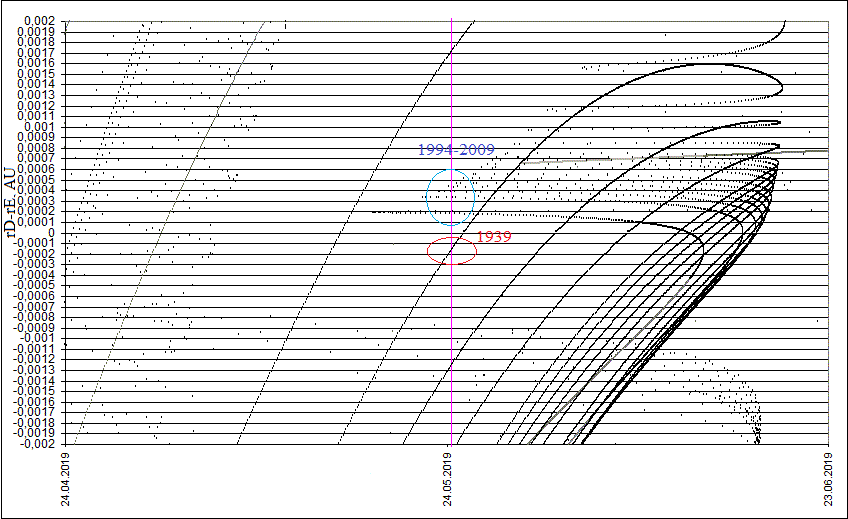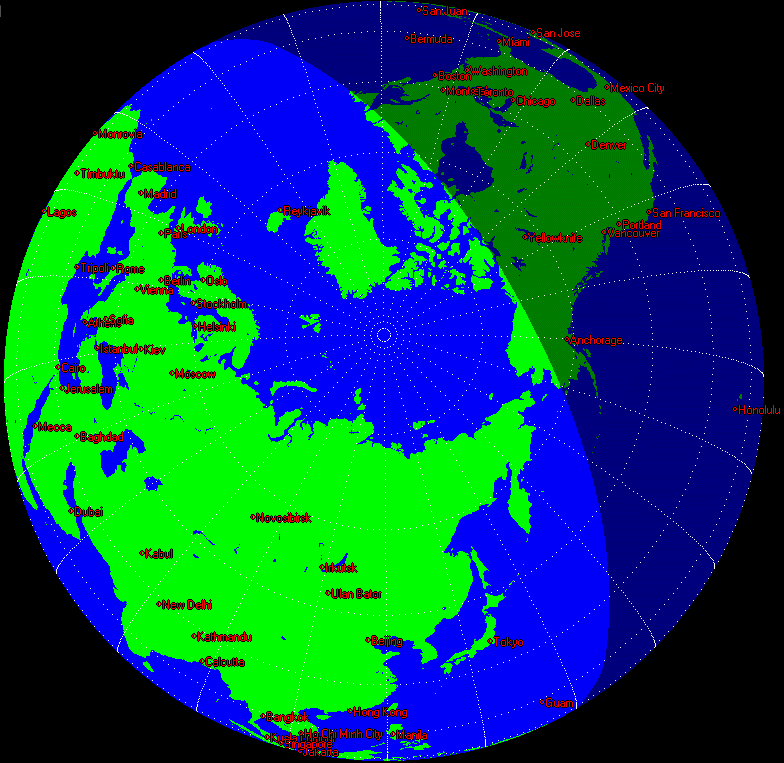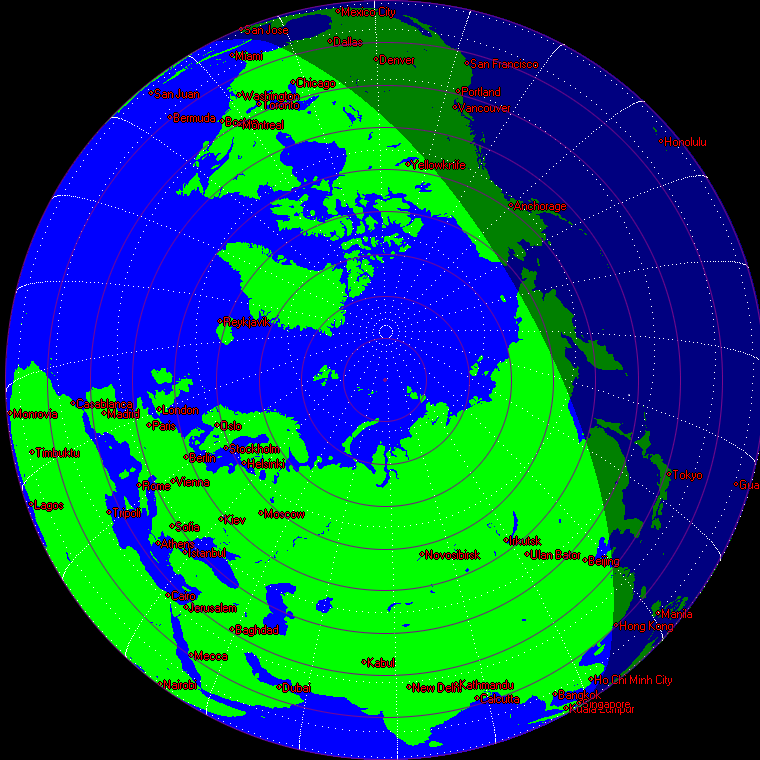209P-ids 2019: prediction of activity
to the list of predictions

Fig. 1. Space-temporal projection of 209P-ids trails parts onto their minimal distance passages in 2019 (correspondence between colours of the particles and their ejection velocities can be seen here).
In 2014 the shower of the comet 209P/LINEAR produced a small outburst. During several hours around 8 UT on May 24 the meteor activity was being registered with visual ZHRmax around 15-20, according to IMO data. This activity was caused by a number of trails, and maximum activity at 7:30 UT was perhaps connected to 1903, which had the most favorable parameters of encounter, according to our computations. The next outburst of 209P-ids activity is expected in 2019, this time due to 1939 trail. A secondary maximum is also possible due to 1994-2009 trails.

Fig. 2. Detailed space-temporal projection of 209P-ids trails parts onto their minimal distance passages in 2019, particles of the 1939 trail encountering with the Earth are in the red circle, and those of 1994-2009 trails are in the blue one.
The results of the shower activity observations in 2014 can be used as a basis for estimation of activity level from 1939 trail in 2019. Let's compare parameters of encounter in 2014 and 2019:
We can see that parameters of encounter with 1903 trail in 2014 and 1939 trail in 2019 are quite close, however among all differences only one plays in favor of 1939 trail - it is younger. Other parameters of 1939 trail encounter - missing distance, density and ejection velocity are not greatly but less favorable than those of 1903 trail. However, they differ not very strong, so we suggest that activity of 209P-ids in 2019 due to 1939 trail encounter is very possible with ZHR up to 10.
| Year | Date of time of maximum, UT | Solar longitude, ° | rD-rE, AU | fM(fMD) | Vej, m/s | Comments |
| 2014 | 24.05.2014 7:21 | 62.863 | -0.00003 | 2.566 | 1.1 | шлейф 1903 г. |
| 2019 | 24.05.2019 7:44 | 62.607 | -0.00014 | 2.071 | -5.9 | шлейф 1939 г. |

Fig. 4. The Earth as seen from coming 209P-ids meteors (RA=123.2°, Dec=+79.9°) during the expected maximum time of outburst from 1939 trail at 7:44 UT on 24 May.
It can be seen that times of maxima in 2014 and 2019 are nearly equal, however it is a coincidence and solar longitudes of these outburst differ quite notably. Still this make geography of places suitable for dark time observation in 2019 similar to that in 2014 - it is the most part of Northern America with best conditions at Portlend and Vancouver. The gibbous waning Moon, although in a bigger phase than in 2014, should also not create too large problems for observations.
Several hour later another activity appearance from the 209P-ids is possible due to 1994-2009 trails. The parts of these trails encountering the Earth ware perturbed during their close passage to our planet in 2014. However they retained a certail level of density and regularity, allowing to hope for some level of detectable activity. Computed times of these trails maxima lay within the period of 10:49-11:15 UT on 24 May. Intencity is expected to be lower than that of 1939 trail, with ZHR up to 5.
Several hour later another activity appearance from the 209P-ids is possible due to 1994-2009 trails. The parts of these trails encountering the Earth ware perturbed during their close passage to our planet in 2014. However they retained a certail level of density and regularity, allowing to hope for some level of detectable activity. Computed times of these trails maxima lay within the period of 10:49-11:15 UT on 24 May. Intencity is expected to be lower than that of 1939 trail, with ZHR up to 5.

Fig. 5. The Earth as seen from coming 209P-ids meteors (RA=123.0°, Dec=+79.4°) during the expected maximum time of outburst from 1994-2009 trail at 11:00 UT on 24 May.
At the time of this outburst the radiant visibility in Northern America will be much worse, remaining only along some parts of the western coast aress of the continent. However, on the other side of the Pacific ocean the sky will be already dark enough to allow useful observations in Japan.
Ссылки
1. "Comet's dust 2.0" program by S. Shanov and S. Dubrovsky. [Used for orbital computations.]
2. Lyytinen E, van Flandern T. "Predicting the strength of Leonid outbursts", 2000, Icarus, P. 158-160.
3. Jenniskens P. Meteor showers and their parent comets, 2006, 780 p. 4. Kasuo Kinoshita, http://jcometobs.web.fc2.com/ [Orbital elements of the comet 209P/LINEAR]
5. Hewgill G. Xearth 1.1.0 (Software program), 2003. 6. Molau S. Results of the IMO Video Meteor Network – December 2014. http://www.imonet.org/reports/201412.pdf 7. 2016 Meteor Shower Calendar, http://imo.net/files/data/calendar/cal2016.pdf
Ссылки
1. "Comet's dust 2.0" program by S. Shanov and S. Dubrovsky. [Used for orbital computations.]
2. Lyytinen E, van Flandern T. "Predicting the strength of Leonid outbursts", 2000, Icarus, P. 158-160.
3. Jenniskens P. Meteor showers and their parent comets, 2006, 780 p. 4. Kasuo Kinoshita, http://jcometobs.web.fc2.com/ [Orbital elements of the comet 209P/LINEAR]
5. Hewgill G. Xearth 1.1.0 (Software program), 2003. 6. Molau S. Results of the IMO Video Meteor Network – December 2014. http://www.imonet.org/reports/201412.pdf 7. 2016 Meteor Shower Calendar, http://imo.net/files/data/calendar/cal2016.pdf